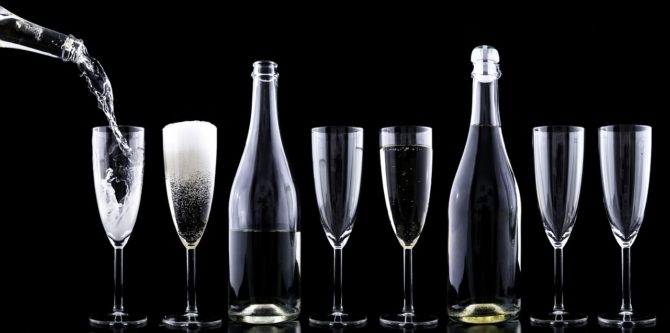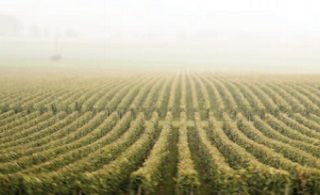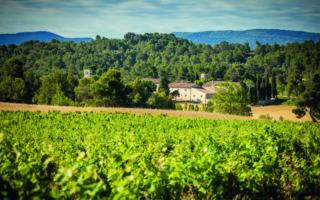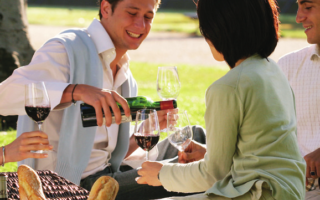The two methods behind French sparkling wines


There are two main methods of making French sparkling wine, the Méthode Champenoise of bottle fermentation, and the closed tank fermentation method, often referred to as Méthode Charmat (from the name of the French scientist who developed it).
Bottle Fermentation: La Méthode Champenoise
This method of re-fermentation in bottle consists of the following phases:
- Assembling the base wine: The base wine is a blend or cuvée generally made from the varieties Chardonnay and Pinot Noir (in France Pinot Meunier is also used) using early picked grapes to retain high acidity.
- Tirage: This wine is then bottled, with the addition of the liqueur de tirage, a syrupy solution that includes cane sugar and selected yeasts.
- Re-fermentation: After being sealed with metal caps, bottles are shaken and stacked horizontally in a cellar at a constant temperature. Over the next four to five months the yeasts create a gradual re-fermentation in the wine which transforms the sugar into alcohol, adding one or two degrees to the total alcohol content, and carbon dioxide. At the end of the process the gas will have built up a pressure of 5-6 atmospheres in the bottle.
- Ageing on the lees: The wine must now age for approximately another 2 to 3 years. During this period the yeast cells break down in a process known as autolysis, creating sediment in the bottle. Bottles are re-stacked every six months or so to check for breakage and shaken (a practice called coup de poignet in French) to prevent the deposit sticking to the side of the glass.
- Riddling: Once ageing is complete, the sediment must be removed from the bottle. The first step is riddling, or remuage, in which bottles are placed top down at a 45-degree angle in the slots of hinged A – frame racks known as pupitres. Over the next two months each bottle is skillfully twisted by hand an eighth of its circumference per day to work the deposit down to the neck. The bottles are gradually up-ended in the pupitres until they stand upright in the slots and the deposit rests against the cap.
- Removing the sediment: The next step is the dégorgement. This involves freezing the deposit by inserting the neck of the inverted bottle in a chilled saline solution. The cap is then removed and the pressure of carbon dioxide in the bottle forces out the plug of frozen sediment.
- Topping: The small amount of wine that is lost during the removal of the sediment must now be replaced. Most types of Champagnes are topped up with a solution of mature wine, sugar and the liqueur d’ expedition, a solution of older wine and cane sugar.Champagne is classified according to its level of residual sugar, using the following terms:Non Dosé: refers to Champagne topped up with the same wine, without sugar. The driest type.
Brut: refers to wines with a maximum of 15 g/l of residual sugar.
Extra dry: has 12-20 g/l
Sec: has 17-35 g/l
Demi-sec: has 33-50 g/l
Doux: has over 50 g/l - Bottles are then sealed with the familiar mushroom shape cork, which is anchored with wire to withstand the considerable pressure from inside the bottle.
Bottles are stored for a time so that the liqueur becomes amalgamated with the wine. On average it takes about three years to produce a fine, bottle-fermented sparkling wine.
Tank Fermentation: La Méthode Charmat
The process of making sparkling wine in sealed tanks is generally known as Methode Charmat.
- Re-fermentation: The base wines blended with selected yeasts and sugar are placed in large, stainless steel tanks where re-fermentation takes place at a temperature of 120-130C under pressure of around 7-8 atmospheres.
- Isobaric filtration: When re-fermentation is complete, the wine is separated from the lees by passing through a filter unto another tank under equal pressure.
- Stabilization:: The wine is stabilized by being chilled to – 40C. This causes tartaric acid to precipitate in the form of crystals, which are then removed.
- Isobaric bottling: The isobaric principle is used to maintain constant pressure in the wine as it is bottled and corked. Wines made by the tank fermentation method are usually released soon after bottling, though some Charmat wines seem to gain harmony after a few months of cellaring.
Do you think you could tell between champagne and other sparkling wines? In any case, you could have a lot of fun trying. Locals say that a good quality sparking wine can be equivalent or better than a mediocre champagne. Beyond the price – a telltale sign for champagne – the easy way to spot the difference is that a sparkling wine can only be named champagne if it comes form the region of Champagne, in Eastern France. It must be produced with the méthode champenoise and can only be made mainly using pinot noir (dark skin), meunier (dark skin) and chardonnay grapes (white), and in some cases arbane, le petit meslier, pinot blanc and pinot gris (all white skinned) varieties although these represent only a small fraction of the production.
Share to: Facebook Twitter LinkedIn Email
By FrenchEntrée
Leave a reply
Your email address will not be published. Required fields are marked *



